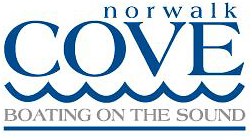NOAA - A Wealth of Information
May 27, 2014
NOAA, The National Oceanic and Atmospheric Administration, traces it's roots back to 1807 when the Nation’s first scientific agency, the Survey of the Coast, was established.
NOAA encompasses various organizations which mariners should be aware of.
There are six main groups:
- National Environmental Satellite, Data, and Information Service
- National Marine Fisheries Service
- National Ocean Service
- National Weather Service
- Office of Oceanic and Atmospheric Research
- Office of Program Planning and Integration
These various groups offer many different services to boaters and here is a quick summary and some useful links….
National Environmental Satellite, Data, and Information Service offers Sea surface temperature charts and is home to SARSAT the Search and Rescue Satellite Aided Tracking division (the folks who receive EPIRB signals)
http://www.sarsat.noaa.gov/ They also provide satellite images to commercial weather groups, web sites and TV stations.
National Marine Fisheries Service, you guessed it, is responsible for the management, conservation and protection of living marine resources within the United States' waters to 200 miles offshore.
The
National Ocean Service is the nation's ocean and coastal agency. It is responsible for Coastal Survey (nautical charts), tide & current info, Coastal Studies & Science, Geodetic Survey, Marine Sanctuaries and Response & Restoration.
The
National Weather Service is weather.gov, the central resource of all things weather and clearing house for marine weather radio, alerts, warnings, current conditions, weather radar, marine buoy reports, climate monitoring, predictions and forecasts. (You need to know about their services and key links ! – see below)
The
Office of Oceanic and Atmospheric Research is
“the research foundation for understanding the complex systems that support our planet” and includes the NOAA Research Laboratories, the National Sea Grant College Program, the Office of Ocean Exploration and Research, comprised of the NOAA Undersea Research Program and the Office of Ocean Exploration, along with the Climate Program Office and the Unmanned Aircraft Systems.
The
Office of Program Planning and Integration provides corporate management to coordinate NOAA’s many lines of service and is the new (2002) corporate management culture at NOAA. It addresses the need to foster integration and strategic management among NOAA Line Offices, Staff Offices, and councils.
Wow, if you are interested in weather, that’s a lot to explore! So here are some links that will get you started using what NOAA has to offer:
National Hurricane Center http://www.nhc.noaa.gov/
Radar at weather.gov:
http://www.weather.gov/Radar there is also a mobile version of this for your phone at
http://mobileweather.gov (new site) or
http://radar.weather.gov (find the local radar site and save it as a favorite)
National Data Buoy Center http://www.ndbc.noaa.gov/ (very helpful for longer cruises or to see what the current weather is around the Sound) and the equally helpful DIAL A BUOY site
http://www.ndbc.noaa.gov/dial.shtml which you need to program into your phone.
NOAA Marine Forecasts http://www.nws.noaa.gov/om/marine/home.htm or
local link for hourly weather forecast.
By Captain Rick Delfosse 203-216-7800 rick@rdelfosse.com rdelfosse@rexmarine.com
Rick is a Coast Guard captain, National Safe Boating Council close-quarters boat-handling and open water boat handling instructor, Connecticut and New York certified safe boating instructor and a US Sailing-certified instructor. He also conducts on-the-water courses and classroom seminars on coastal cruising and boating skills. The owner of a 43-foot pilothouse cutter and an Aquasport powerboat, he has extensive cruising and one-design, coastal and offshore racing experience.
.
Categories:
None
